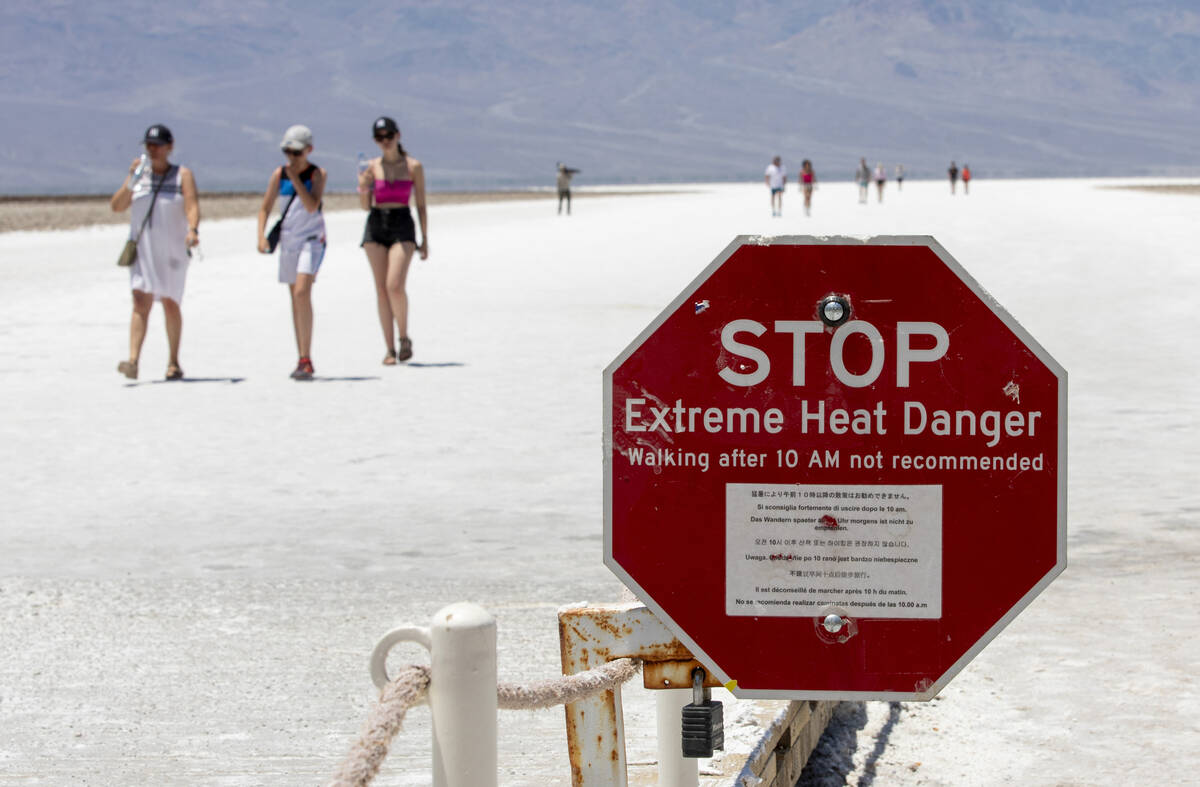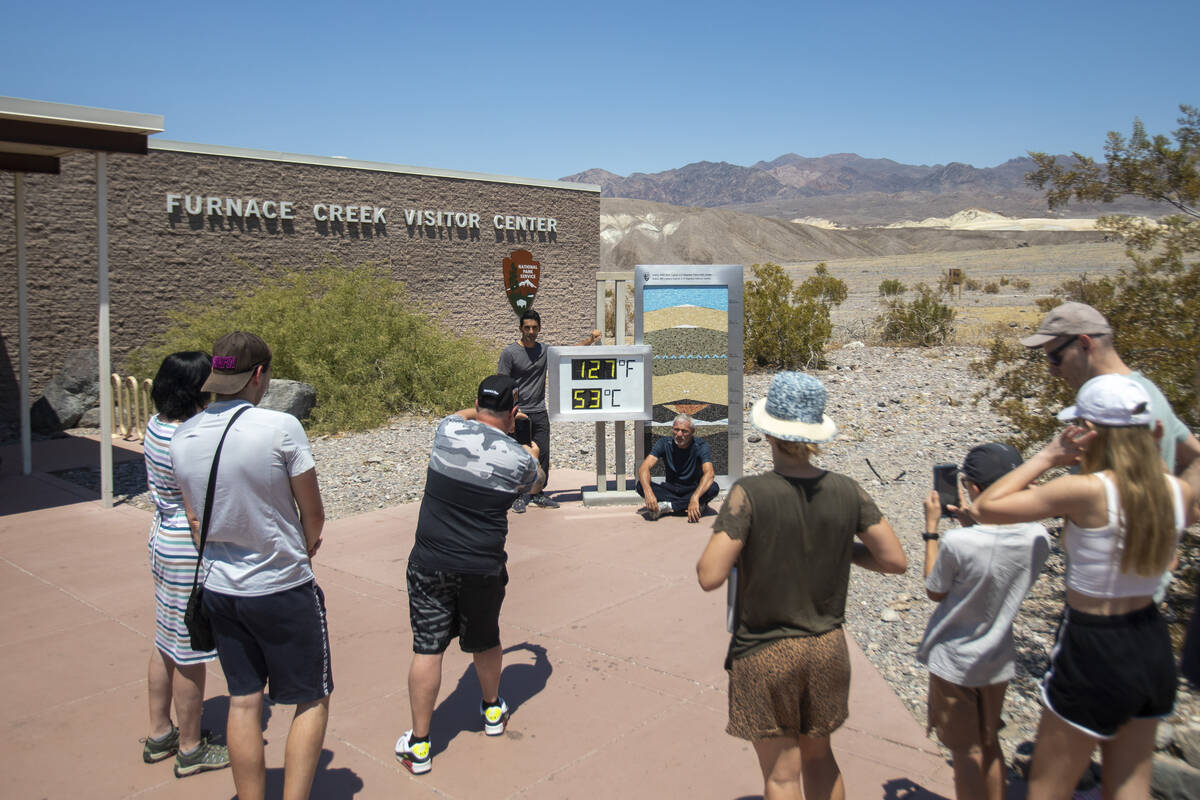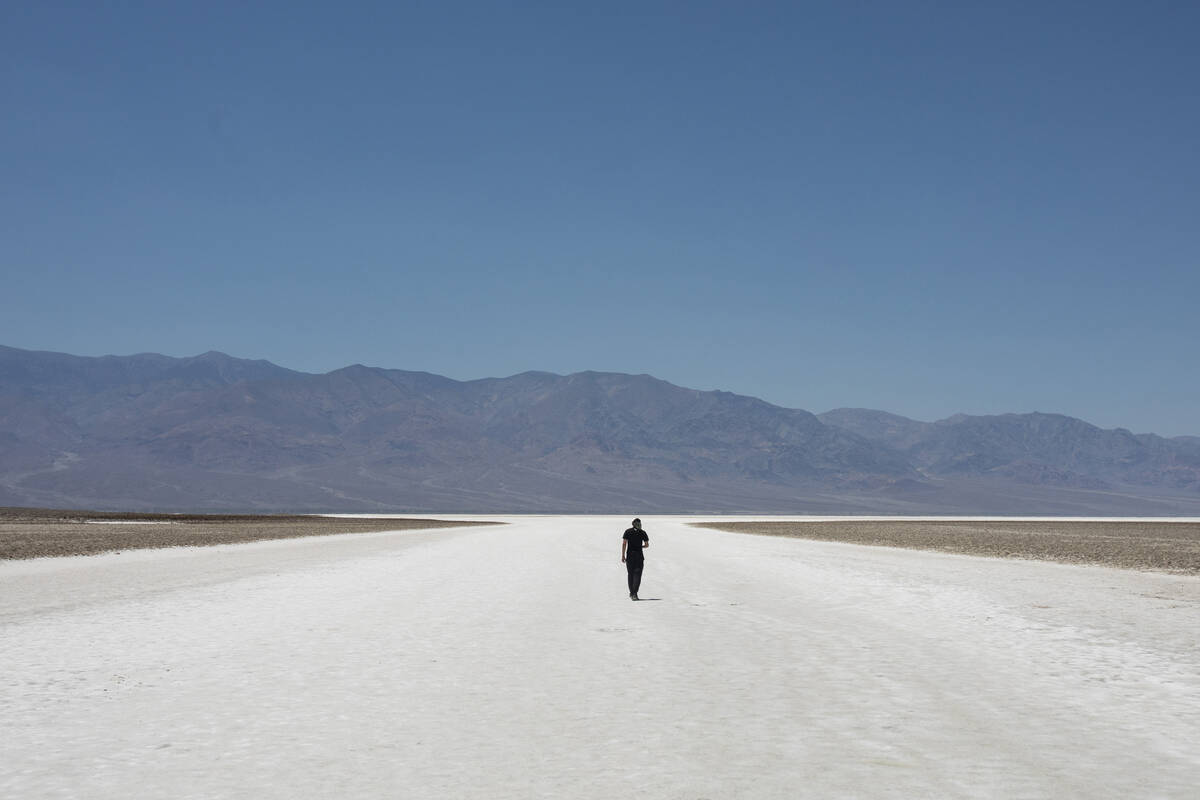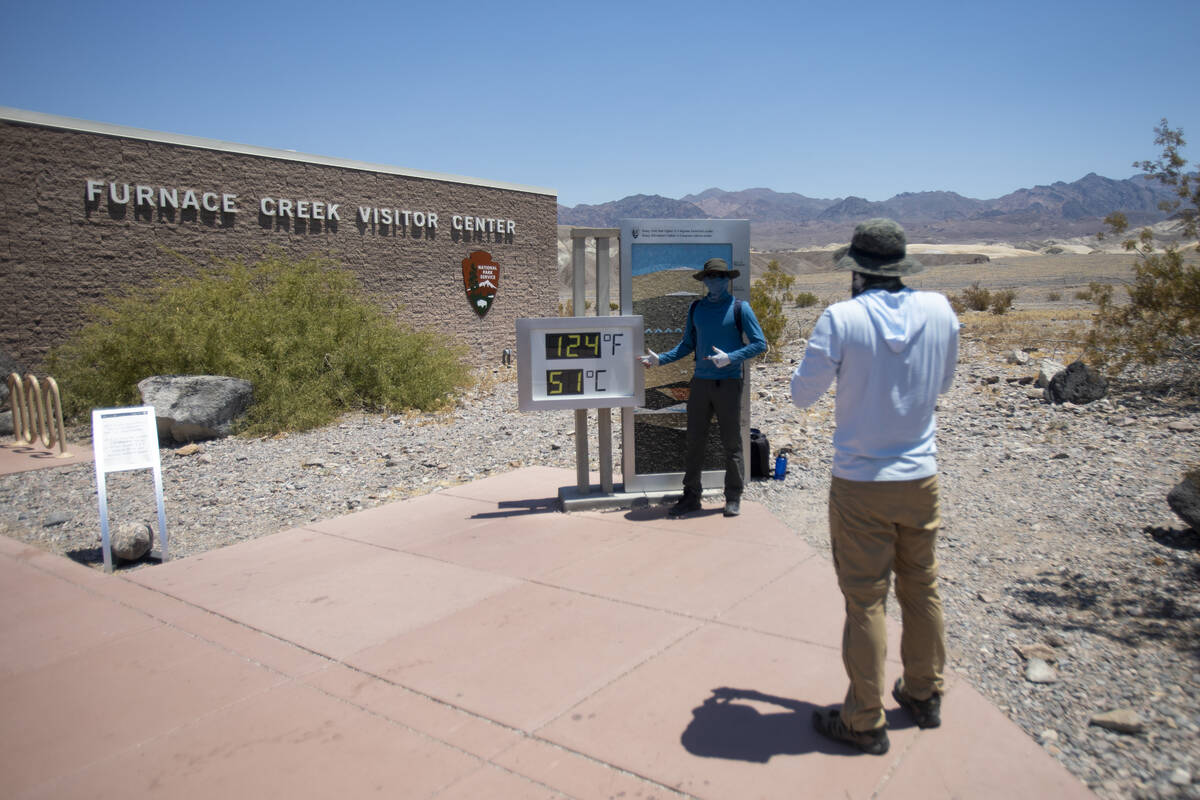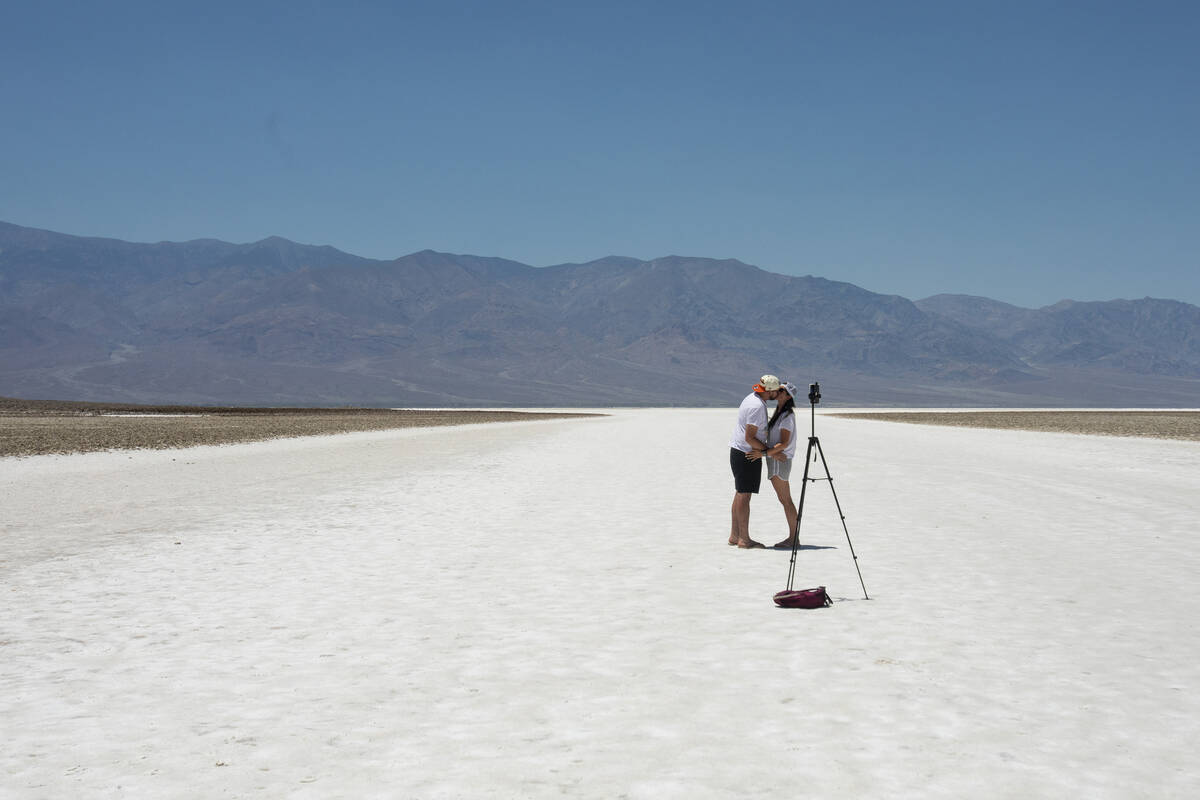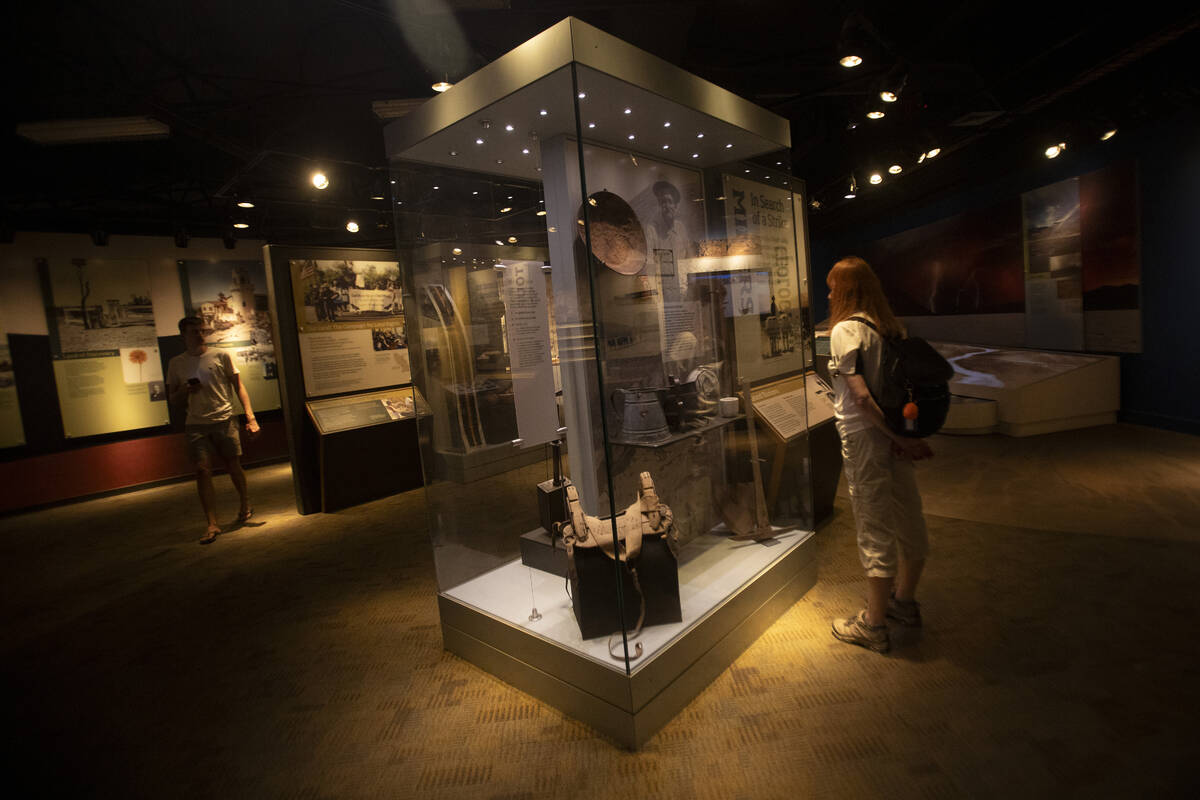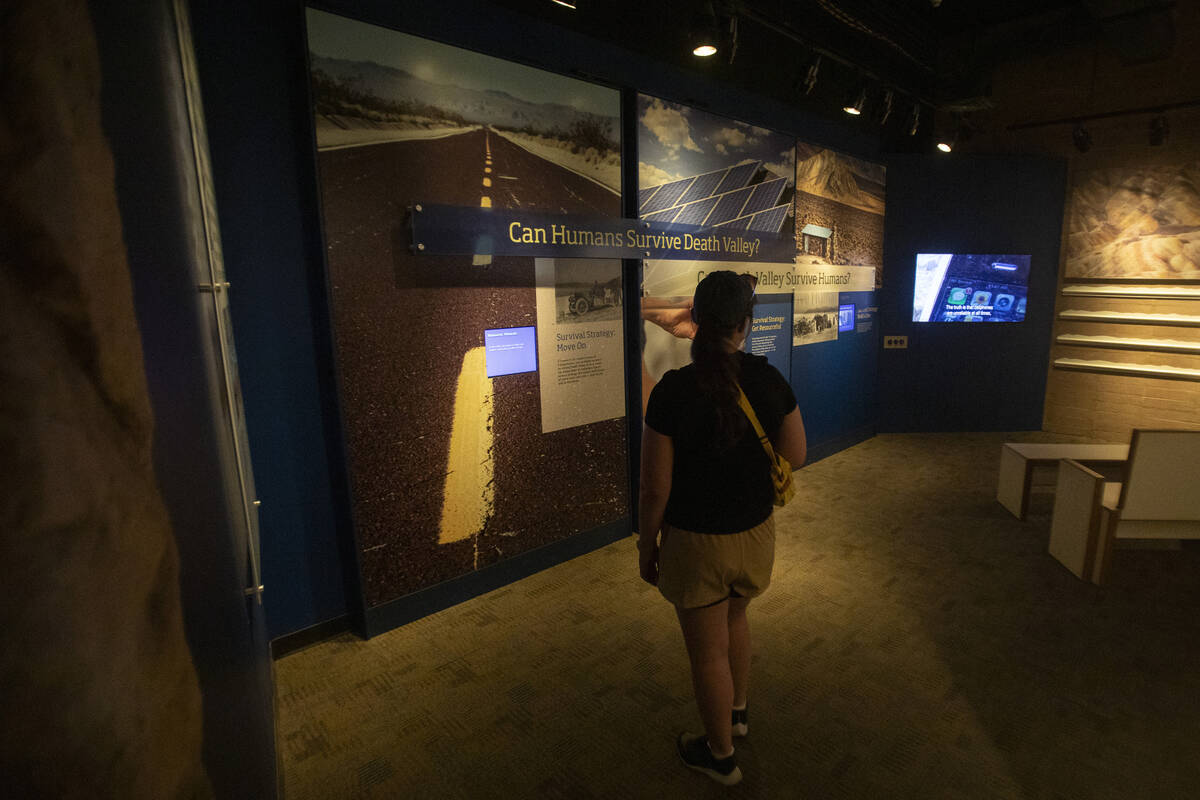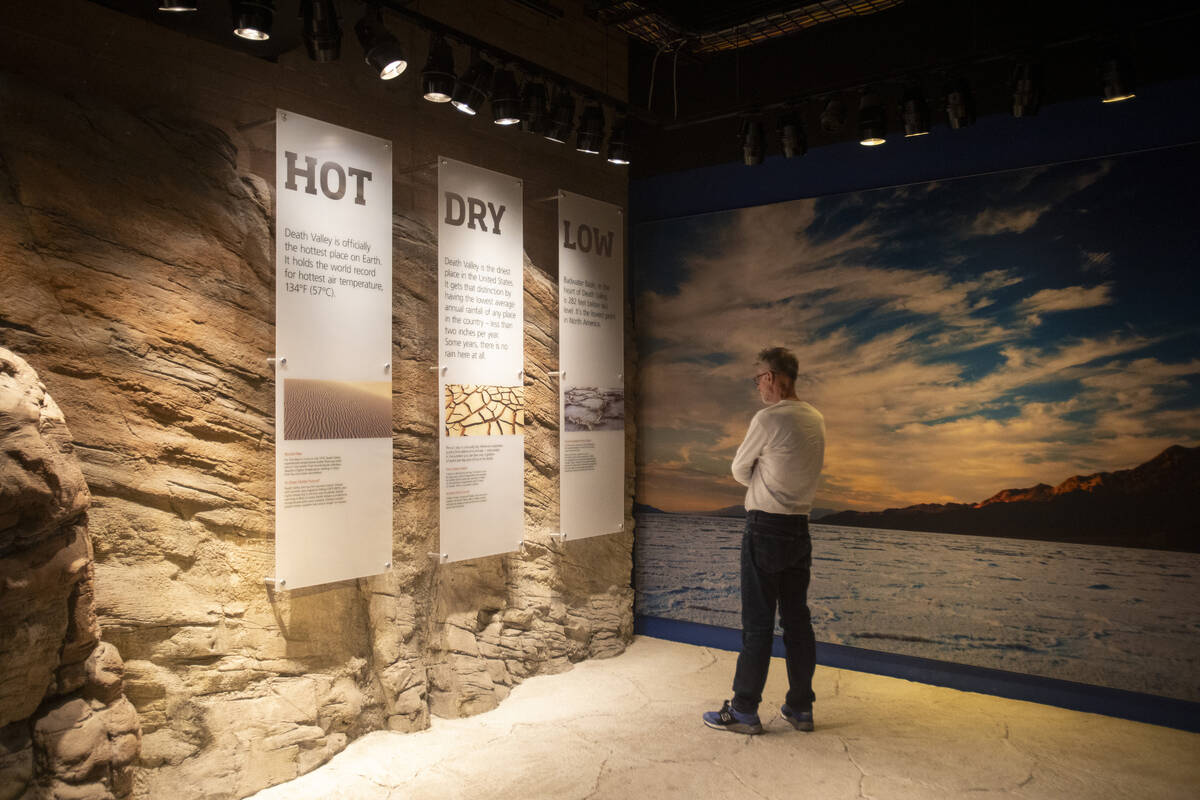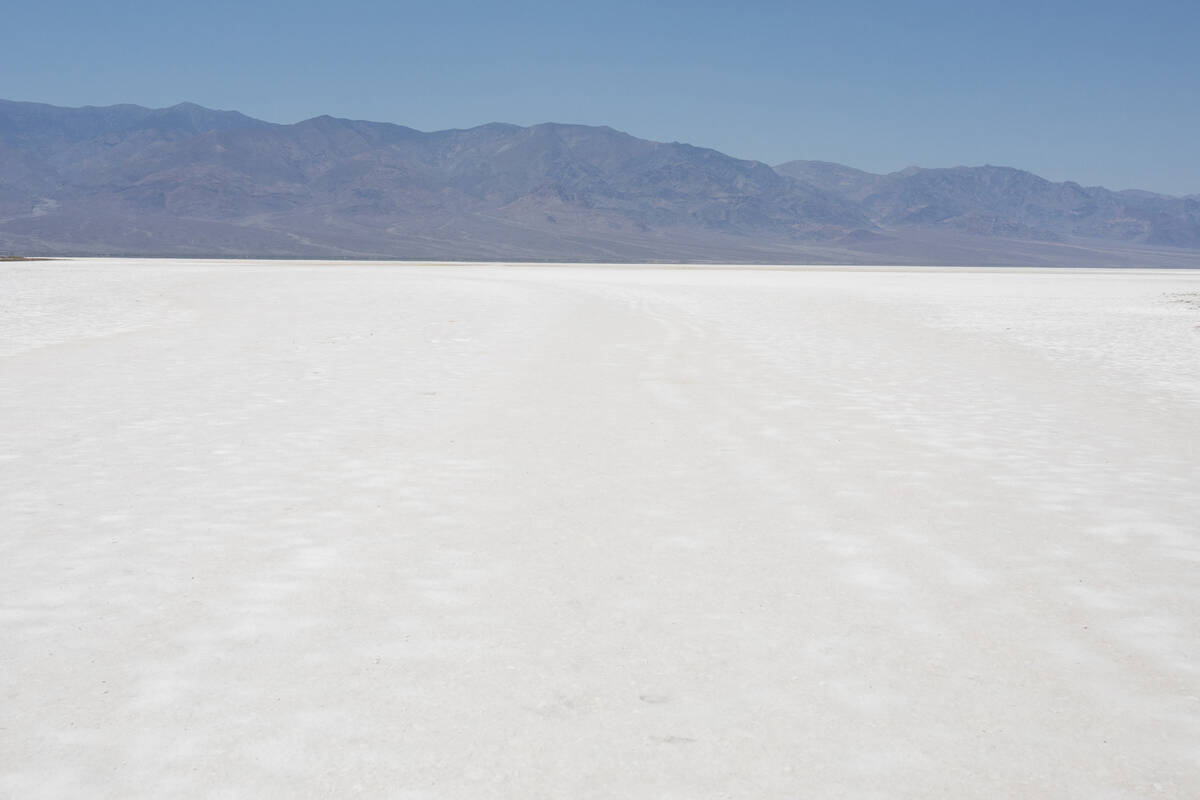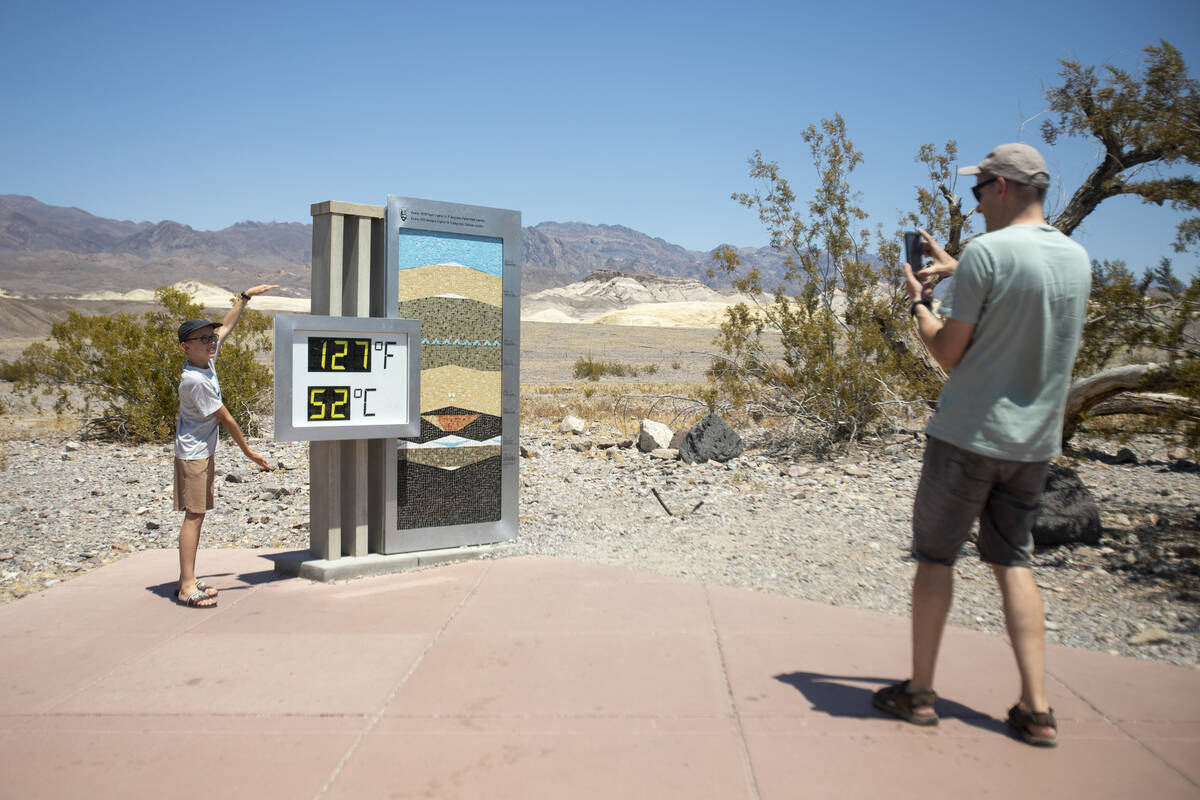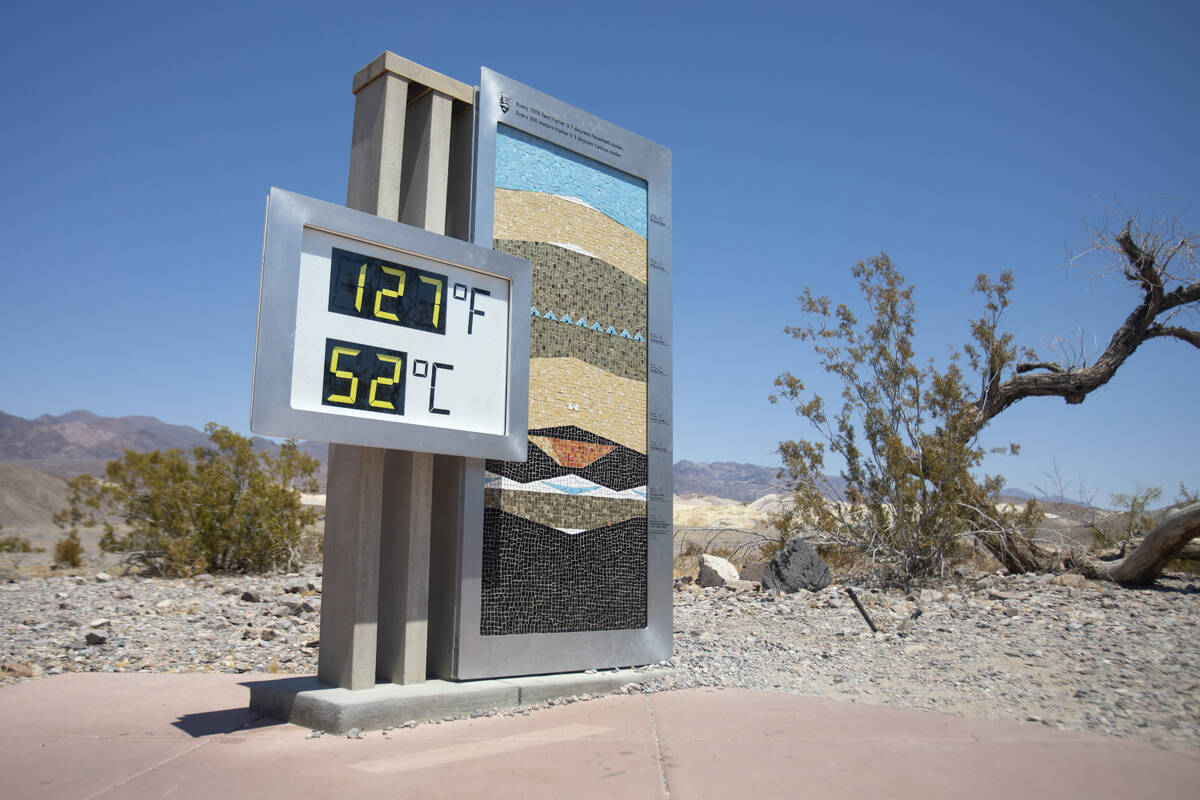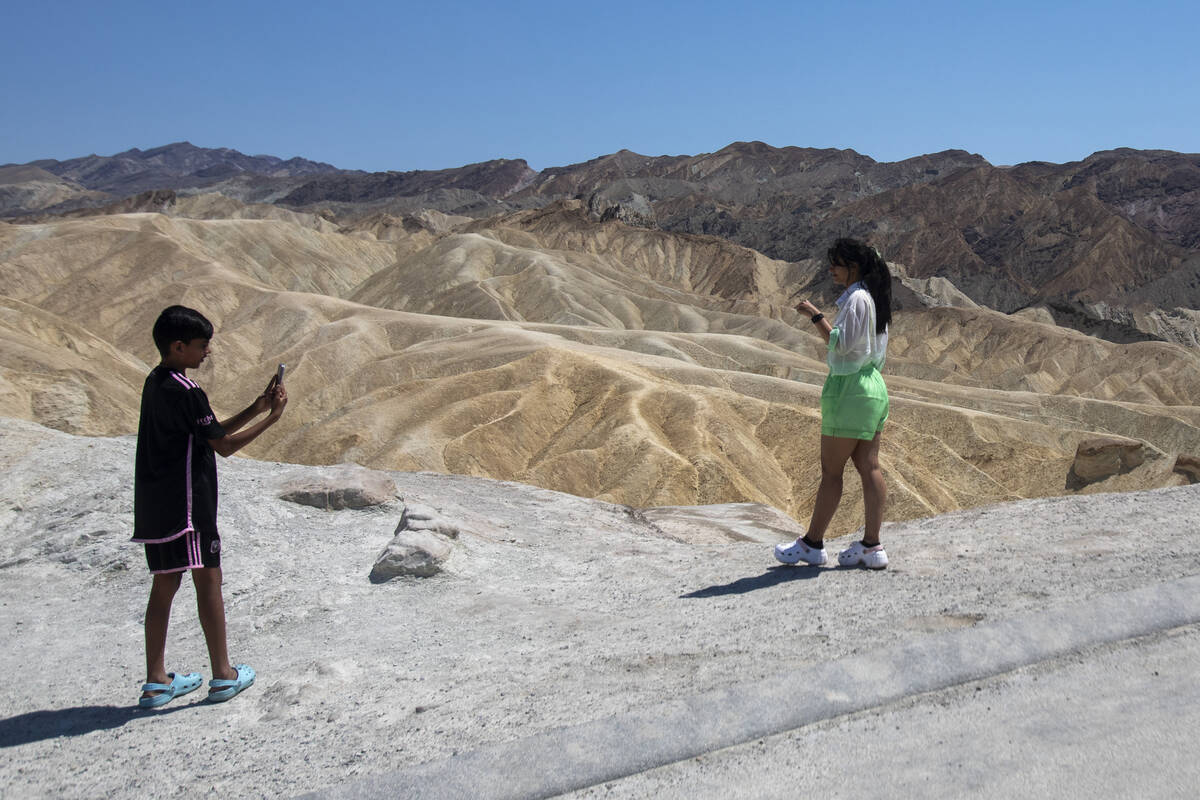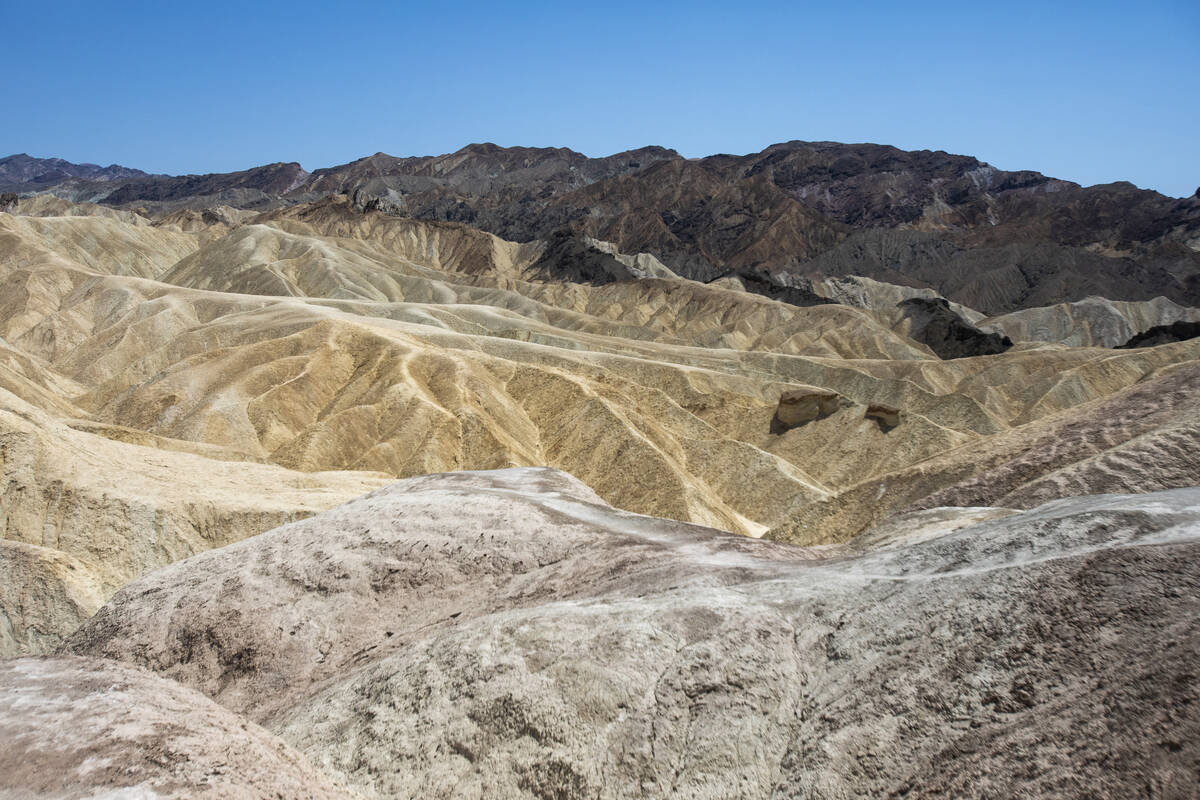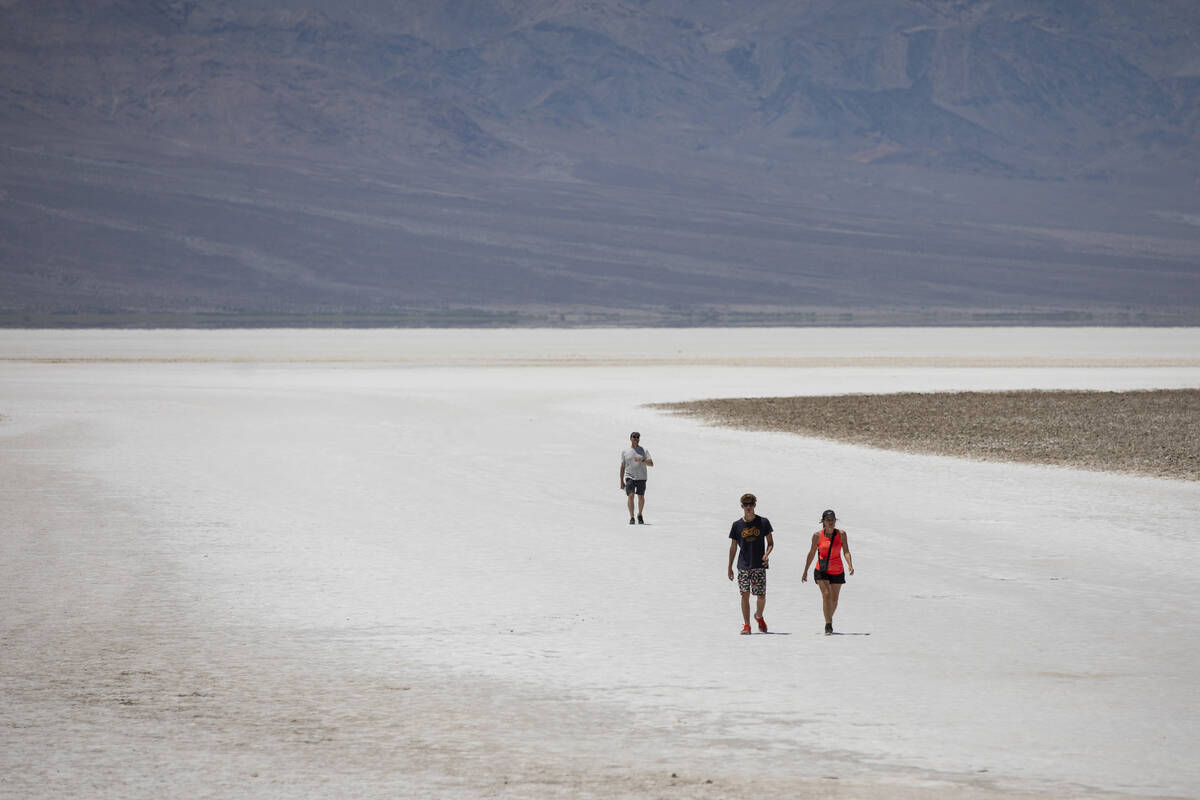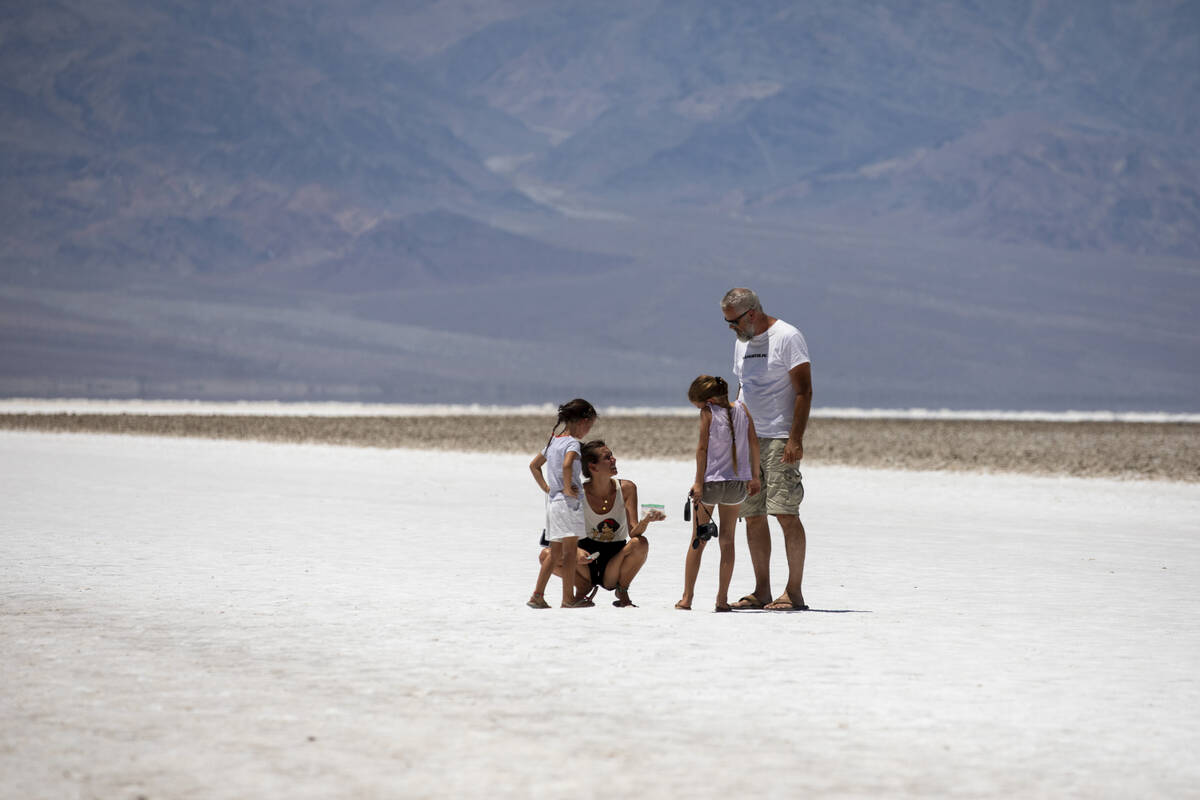Death Valley is setting heat records. Tourists are coming anyway
FURNACE CREEK, Calif. — During hellish summers at Death Valley National Park, the only reprieve from nature’s forceful blow dryer is an air-conditioned car.
Getting out of the car is an Olympic sport at the hottest times of the day. Not even park rangers dare spend more than 5 minutes at a time in the outdoors, breaking an instant sweat as extreme heat envelops the body and can easily put even the most fit on the path to heatstroke.
Monday wasn’t out of the ordinary for Death Valley, only cracking 126 degrees. Saturday and Sunday reached daily records, though, with 128-degree and 129-degree readings, respectively. Records are being broken faster than ever before, most meteorologists argue, largely because of worldwide climate change.
Jennette Jurado, a Death Valley park ranger of four years, said she can sense when the temperature breaks 120. It demands attention in a way that more routine desert heat doesn’t.
“I can tell that that threshold has been crossed without even needing a thermometer,” Jurado told the Las Vegas Review-Journal on Monday. “I step outside and immediately squint. My eyes feel this intense burn.”
If Las Vegas’ record-breaking summer isn’t enough, people can — and many do — venture out to Death Valley to chase the sensation one can only feel in the place where the World Meterological Organization has verified the hottest temperatures to ever grace the Earth.
Death knocks on Death Valley’s door
That desert desire turned deadly Saturday for a group of six motorcyclists near the salt flat known as Badwater Basin.
One motorcyclist died on the scene before rescue was available, Jurado said, while another had such severe signs of heat stress that a rescue flight to Las Vegas became necessary.
It was a good Samaritan who brought the tourists to the Furnace Creek Visitors Center, she said, where four of them were treated for heat stress and allowed to leave.
“Minutes truly matter in these situations,” Jurado said.
The heat was so extreme, however, that one company that regularly assists in medical emergencies at Death Valley was unable to make the flight to Las Vegas, Jurado said. A military plane had to do the job.
Heat was likely the culprit for the motorcyclist who couldn’t be saved, rangers believe.
“Every indication pointed toward heatstroke,” Jurado said of the victim who died at the park, adding that the Inyo County coroner’s office would declare an official cause of death.
She said the park averages about seven deaths a year.
Tourists relish in near record
For years, Death Valley has made a tourist attraction out of extreme heat.
A massive thermometer sits outside the visitor center, which makes for one of the more popular spots to take a selfie. The true record for Death Valley temperatures is disputed. While the National Weather Service considers the July 1913 reading of 134 degrees the true record, some meteorologists like William Reid have spent their careers trying to prove otherwise.
Reid, who has studied climatology in the region for decades, argues that a weather observer likely inflated the numbers, hoping to set a shocking record.
”I couldn’t put it together until I realized,” Reid said, “maybe he was making it up.”
Still, this year Death Valley hasn’t quite reached 130 degrees, which Reid considers a more reliable record. Regardless, in such a popular destination, heat waves sometimes make for an unfortunate coincidence for some who plan their vacations in advance.
Jodie Liddy, who went hiking while pregnant 27 years ago during Death Valley’s July heat, said she and her husband, Jim, were staying away from intense physical activity during their anniversary trip. The risk wasn’t worth it.
“We knew it was going to be hot,” said Liddy, a 56-year-old tourist from Denver. “But not this hot.”
Another group of travelers was Brad Kudlas and Drew Belt, friends from Georgia and Mississippi who flew into Las Vegas and drove to the park. They’re planning on hiking Mount Whitney — the highest mountain in the contiguous United States — later this week, so they figured checking out the lowest point might make sense, too.
Braving the heat was worth the chance to experience a place that feels like another planet, Kudlas said. Still, the pair was surprised to see so many tourists out on Monday.
“I thought we’d be the only idiots,” Belt said with a chuckle.
Over the years, heat may worsen
As heat records are smashed throughout the country, it’s safe to say Death Valley could be next, perhaps surpassing both the 130-degree and 134-degree records.
John Mejia, a climatology professor with the Desert Research Institute, said extreme records can be helpful to determine trends across the globe. Still, seeing records broken in cities around the country every year raises questions.
“Are these becoming more frequent?” Mejia asked. “Is climate change adding to these records?”
Signs point to yes. But what’s more relevant in the short term, Mejia said, is educating people about how to stay safe in the heat.
More than 146 million people were living in cities under heat alerts as of Monday, according to the National Weather Service. The heat island effect, where pavement and buildings absorb heat, is a silent killer that will only get worse, Mejia said.
“Heat is a slow-moving monster,” he said.
Contact Alan at ahalaly@reviewjournal.com. Follow @AlanHalaly on X.



